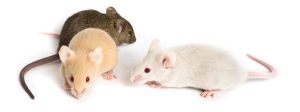[D]ying and dead wood provides one of the two or three greatest resources for animal species in a natural forest … if fallen timber and slightly decayed trees are removed the whole system is gravely impoverished of perhaps more than a fifth of its fauna.
–Charles S. Elton, The Pattern of Animal Communities, 1966
I recently attended one day of the four day long Public Interest Environmental Law Conference (PIELC) held at the University of Oregon. One panel in particular titled “Rethinking Forest Health” serves as the inspiration for this post. The panel included George Wuerthner. The purpose of the panel was to reconsider what it means for a forest to be in good health. Wuerthner’s portion of the presentation focused largely on the need for dead trees and down wood in a healthy forest—a requirement no less vital to forest health, according to Wuerthner, than living trees.
I was most interested in the many ways that wildlife—including birds, mammals, reptiles, amphibians, and others—depend on the presence of dead trees. Below are some examples drawn from the available scientific and technical literature (bold emphasis on species names has been added):
- Primary cavity excavators, such as woodpeckers, make cavities in dead trees for nesting and roosting. Many woodpeckers explicitly require dead trees for such purposes as they are unable to puncture sound wood. This has led Swedish researchers Angelstam and Mikusinski to conclude that the presence of woodpeckers is “not compatible with intensive forest management.”
- Secondary cavity nesters, such as red squirrels, flying squirrels, bushy-tailed woodrats, and many species of bat, do not create their own cavities but nest in cavities made by the primary cavity excavators. (Source)
- “Hollow logs may be homes for returning marten, fisher, lynx (Lynx canadensis), bobcat (L. rufus), bear (Ursus spp.), raccoon, and numerous other creatures.” (Source)
- “Shrew-moles (Neurotrichus gibbsii), shrews (Sporex sp.), deer mice (Peromyscus maniculatus), salamanders and frogs may use smaller cavities in the decaying wood for thermal and protective cover, in addition to foraging on the various insect larvae harbored there.” (Source)
- “[S]everal mammals use floating logs including mink (Mustela vison), river otter (Lutra Canadensis), and beaver (Castor canadensis)” (Source)
- Beetles and ants are primary cavity excavators. They raise their young in the cavities they create in dead wood. (Source)
- Honey bees and wasps frequently use hollow logs, decayed trees, or other cavities to build their nests. In turn, animals such as bears often rely on the insects who make their home in dead wood as an important food source. (Source)
- “Rodents, snowshoe hare (Lepus americanus), gray wolf (Canis lupus), and wolverine (Gulo gulo)…use down wood as maternal or resting dens” (Source)
- Larger animals may use snags (standing dead trees) to evade predators; likewise smaller animals can use down wood as cover to avoid aerial predators.
- “Loose bark on dead trees may also provide nesting crevices for brown creepers (Certhia americanus)” and certain other birds. (Source)
- “Logs provide cover for mountain lions (Felix concolor) at diurnal bed sites and at natal and maternal den sites.” (Source)
- “Red-backed voles use logs extensively for cover and food, eating mostly fungi and truffles, many of which are associated with logs.” (Source)
The above examples focus exclusively on what dead trees and down wood—commonly referred to as “coarse woody debris” in the relevant literature—provide to animal species. The list could be expanded with both by listing additional benefits to animals but also by listing benefits to plant life or things such as preventing erosion and enriching the soil.
In intensely managed forests—glorified tree farms—dead wood is often nearly absent wheras “[i]n naturally dynamic forests dead wood is a dominating feature and makes up 30-40% of the total wood volume.” After a single logging event, dead wood may be reduced to 20 percent and after several logging rotations, dead wood may be a mere one percent of the total volume of wood that remains. (Source)
Current logging practices are often defended by pointing out that a clearcut, for example, might sometimes appear to mimic large scale fires. The significant difference in these cases is that even intense fires tend to consume less than 10 percent of available wood whereas clearcuts can remove upwards of 95 percent of available wood. Wuerthner describes this down wood as a “biological legacy” in contrast to the timber industry which often characterizes it as “wasted” or “squandered”.
During the question and answer portion of the panel that inspired this post, Wuerthner was asked what this information meant for the prospect of “sustainable forestry”. Admitting that his answer was likely to be “unsatisfying” and imprecise, he suggested that any rate of harvesting timber that was economically viable was almost sure to have exceeded a sustainable level.
Perhaps an alarming conclusion for those with an almost religious faith in the idea that industry and nature can co-exist; less alarming for those such as Aldo Leopold who, albeit resorting to a mechanical metaphor, asked: “who but a fool would discard seemingly useless parts? To keep every cog and wheel is the first rule of intelligent tinkering.”
Recommended:
Wild Fire: A Century of Failed Forest Policy by George Wuerthner
Proceedings of the Symposium on the Ecology and Management of Dead Wood in Western Forests (2002)
http://www.fs.fed.us/psw/publications/documents/gtr-181/
“The Seen and Unseen World of the Fallen Tree”
http://digitalcommons.usu.edu/cgi/viewcontent.cgi?article=1163
Treesearch
http://www.treesearch.fs.fed.us/
“All Treesearch publications were written or produced by Forest Service personnel and are in the public domain.”






